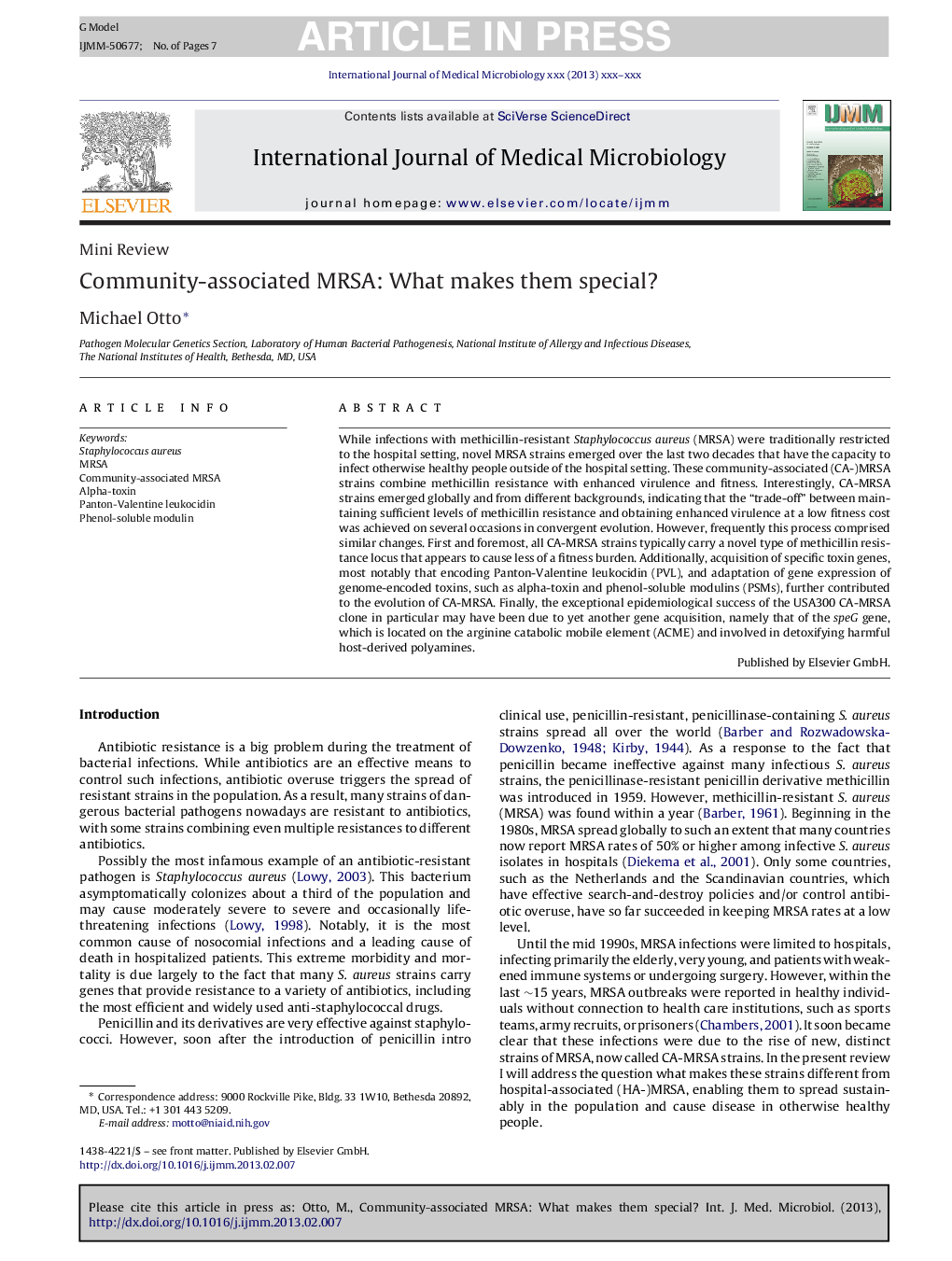| کد مقاله | کد نشریه | سال انتشار | مقاله انگلیسی | نسخه تمام متن |
|---|---|---|---|---|
| 8385840 | 1543699 | 2013 | 7 صفحه PDF | دانلود رایگان |
عنوان انگلیسی مقاله ISI
Community-associated MRSA: What makes them special?
دانلود مقاله + سفارش ترجمه
دانلود مقاله ISI انگلیسی
رایگان برای ایرانیان
کلمات کلیدی
موضوعات مرتبط
علوم زیستی و بیوفناوری
بیوشیمی، ژنتیک و زیست شناسی مولکولی
بیوشیمی، ژنتیک و زیست شناسی مولکولی (عمومی)
پیش نمایش صفحه اول مقاله

چکیده انگلیسی
While infections with methicillin-resistant Staphylococcus aureus (MRSA) were traditionally restricted to the hospital setting, novel MRSA strains emerged over the last two decades that have the capacity to infect otherwise healthy people outside of the hospital setting. These community-associated (CA-)MRSA strains combine methicillin resistance with enhanced virulence and fitness. Interestingly, CA-MRSA strains emerged globally and from different backgrounds, indicating that the “trade-off” between maintaining sufficient levels of methicillin resistance and obtaining enhanced virulence at a low fitness cost was achieved on several occasions in convergent evolution. However, frequently this process comprised similar changes. First and foremost, all CA-MRSA strains typically carry a novel type of methicillin resistance locus that appears to cause less of a fitness burden. Additionally, acquisition of specific toxin genes, most notably that encoding Panton-Valentine leukocidin (PVL), and adaptation of gene expression of genome-encoded toxins, such as alpha-toxin and phenol-soluble modulins (PSMs), further contributed to the evolution of CA-MRSA. Finally, the exceptional epidemiological success of the USA300 CA-MRSA clone in particular may have been due to yet another gene acquisition, namely that of the speG gene, which is located on the arginine catabolic mobile element (ACME) and involved in detoxifying harmful host-derived polyamines.
ناشر
Database: Elsevier - ScienceDirect (ساینس دایرکت)
Journal: International Journal of Medical Microbiology - Volume 303, Issues 6â7, August 2013, Pages 324-330
Journal: International Journal of Medical Microbiology - Volume 303, Issues 6â7, August 2013, Pages 324-330
نویسندگان
Michael Otto,